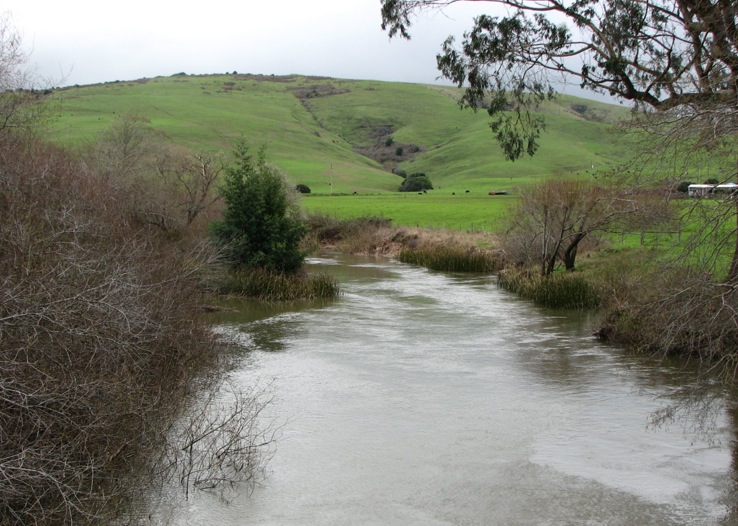
"An example of the Rhetorical Form: The River " (1937) by Pare Lorentz
motive | prelude | facts | argument | deeper purpose of the film | style | conclusion | reception
"Begins with an introduction of the situation" material to be considered
"Goes on to a a discussion of the relevant facts, then gives proof that a given solution fits those facts and ends with an epilogue that summarizes what has come before."
p. 360
The Great Depression (1929-1940) had created civic, commercial, employment, and environmental threats to the moral fabric of the American nation.
Franklin Delano Roosevelt was elected President in 1930 and took office in 1931 during the worst financial crisis in the nations history with as many or more than one in four people out of work.
"a public works program" ... "sought to provide jobs for the large numbers of unemployed workers, as well as protect various social problems."
"he faced strong political opposition at the time."
motive | prelude | facts | argument | deeper purpose of the film | style | conclusion | reception
"The River hails the Tennessee Valley Authority (TVA) as the solution to the region's problems of flooding, agricultural depletion, and non-electrification. The film had a definite ideological slant: promote Roosevelt's policies. Thus the film's argument was controversial at the time. It might be considered equally controversial today…"
"given the movement toward getting rid of dams and restoring rivers to their original ecological states."
The historical basis of the film as interpreted in images and sounds
"pays close attention to how the sound track can arouse emotion
"This famous roll call of the rivers
"The film just seems to be giving information about the Mississippi. It proceeds for quite a while before its argument become apparent."
"careful use of repetition, variation, and development"
"segments working together."
builds a case for all of the reliable and knowledgeable"
by use of maps and historical photographs
motive | prelude | facts | argument | deeper purpose of the film | style | conclusion | reception
"builds a case"
"The moral of the film becomes apparent"
"the land worn out by the cultivation of cotton, and people forced to move west."
p. 363.
"The post war South is depicted as 'tragedy of land impoverished'..." because "as the narrator suggests 'we mined the soil for cotton until it would yield no more' and this is a means of building authentic concern and wisdom into the narration since "here the film's persuasive intent becomes evident."
pp. 362-63.
"Up to this point we have seen the strengths of America associated with the river valley, with just a hint o of the problems that growth has sparked."
"Beginning with the barren hilltops, we are shown how melting ice runs off, and how the runoff gradually erodes hillsides and swells rivers into flooding torrents."
motive | prelude | facts | argument | deeper purpose of the film | style | conclusion | reception
Lorentz's techniques in the use of film's many mediums (sight, sound & timing)
"now the music is somber"
p. 363.
"Then in a series of close ups of the earth, water gathers, first in trickles, then in streams washing the soil away."
The director Lorentz's style: "he reinforces the film's argument through techniques that arouse the audience's emotions."
music "a high dissonant chord" sounds -- "signals us to expect danger."
stylistic choices convey a sense of rising tension, convincing us of the flood's threat."
danger is the mood created by the audio and visual sequencing of the images
"Throughout The River, voice, music, editing, and movement within the shot combine to create a rhythm for such rhetorical purposes."
"the effects of floods on people's lives in contemporary America."
p. 363.
motive | prelude | facts | argument | deeper purpose of the film | style | conclusion | reception
"The old river can be controlled. We had the power to take the Valley apart. We have the power to put it together again."
p. 364.
"Narration: 'the poor land makes poor people–poor people make poor land.' This sounds reasonable on the surface, but upon examination, its meaning becomes unclear."
"does not bother to rebut these alternatives, relying instead on our habitual inference from problem to solution."
p. 364.
"Electricity generated by the dams links these rural communities... bringing the countryside 'the advantages of urban life.' Many motifs planted in a simple fashion are now picked up and woven together to act as proofs of the TVA's benefits."
"The ending shows life being parallel to the way it was in the beginning–beautiful nature, productive people–but enhanced by modern government planning."
"Tying the ending back to the beginning...."
"A return to idyllic nature,"
p. 365.
The River " (1937) achieved its purpose….Reviewers and the public alike greeted the film enthusiastically."
"By 1940 Congress had taken away the U.S. Film Services funding, and documentary films were once again made only within separate sections of the government."
p. 365.

"The River" (1937) by Pare Lorentz
motive | prelude | facts | argument | deeper purpose of the film | style | conclusion | reception
The End
Defining film | Narrative elements in film | Film structure | Documentary films | Mise en scene
Word index | Words | Key terms | Word webs | Basic vocabulary | Advanced Vocabulary | Antonyms | Synonyms